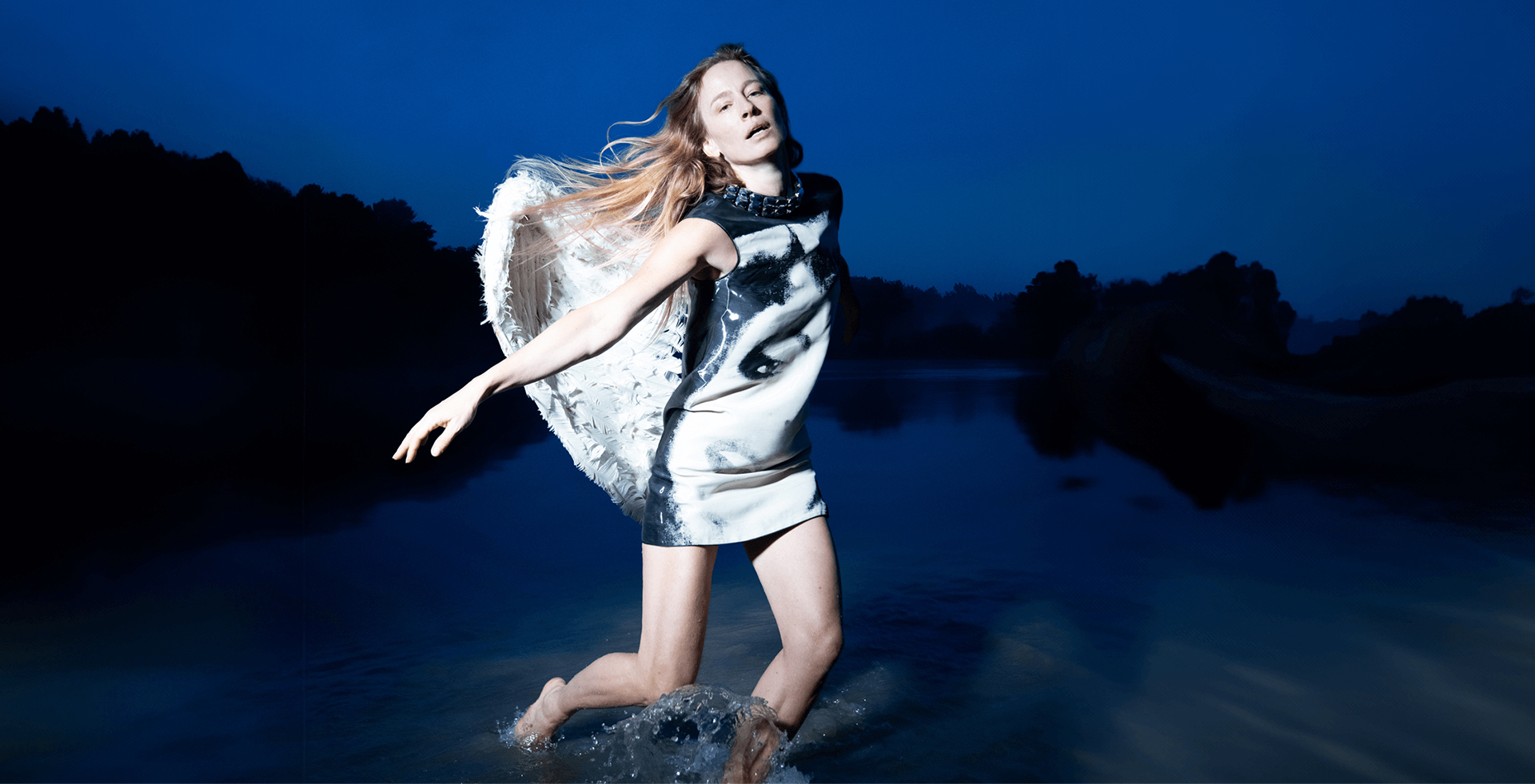
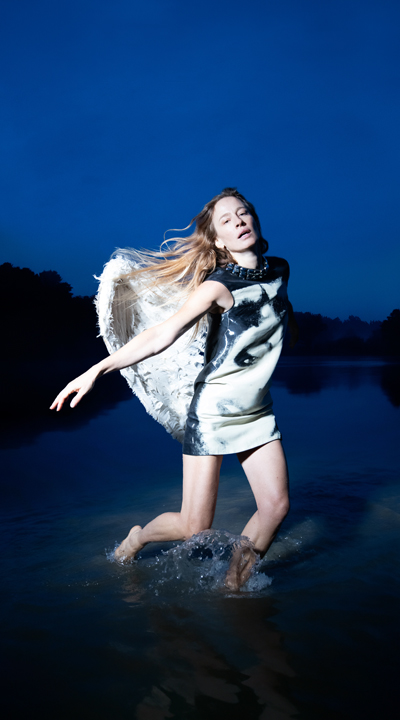
Nataša Vojnović has had her share of Vogue covers over nearly 30 years of modeling. But to be the face of the first Vogue Adria has a different flavor for the 44-year-old model : the recognition at home of the particular status she achieved in the worldwide fashion industry. With her former agent in Paris, she recalls how it started, what it took, and where she’s at today.
Am I projecting power ?, says Nataša Vojnović in a thick accent, as a film crew sets up the next shot. It’s one of the skits brilliantly directed by Nadia Lee Cohen for the new Dsquared SS2024 campaign, a spoof of Boogie Nights. The younger generation may not recognize the reference and the irony, but anyone who’s worked with Vojnović instantly sees it : the willingness to do anything for a good shot, the attention to detail, the collaborative approach to her work, the down-to-earth, no-nonsense vibe, but also the sheer pleasure of being in front of the camera. And the power, of course.
Nataša Vojnović is 44 years-old, and she’s on the cover of the first Vogue Adria. It’s nearly 30 years since I started my career, and I’m happy to be on the first issue. I feel that a lot of young girls will see it and read it, and I had to think about what it takes to be a model. I’m grateful because they could put someone who is more plastic on the cover. I feel like the Balkans are understanding fashion now, they get it. But straight-talking Nataša doesn’t play shy : There are good models in Serbia, and they’re going places. But the career that I’ve made, none of them made.
I had no expectations, really
As a teenager, Nataša wanted to be a film director and was aiming for the renowned Łódź film school in Poland. I would have a lot of people walking up to me and wanting me to model. I think I was very lucky that my aunt worked for the police. She would check them out and they would turn out… not cool. When Elite organized its first Look of the Year contest in Serbia, her aunt gave the green light. And Nataša won. I had no expectations, really, except paying off the USD 50,000 advance they gave me. From that moment I was on all the covers in Belgrade, but that didn’t make me a model elsewhere. I would get sent to Vienna, Paris, Milan and struggle with other girls, struggle with my agency, struggle with who I was. I would go for small editorial shoots, then come back and lie in interviews about what I was doing, not only because I felt that’s what was expected of me, but because I knew that I could do it.
Nataša caught my eye when she first came to Elite Paris in 1997, after trying her luck in Vienna and Milan. She wasn’t in my division, but the first thing that jumped at me was the attitude. A lot of her conversation was Fuck you, fuck them, fuck this shit. She came from a place where life was dangerous, where she needed to be tough, and perhaps hide how beautiful she was. That’s the second thing I noticed : perfect height and size, graceful movement, and a symmetrical face, which very few people have. The fashion industry was trying to make her look pretty, but she didn’t do pretty, that wasn’t her thing : I was scared to be pretty, there are so many pretty girls, she says. I can do sexy now, but back in the day I was like, no, I’m not doing this. Her favorite models then were Kristen McMenamy and Milla Jovovich. Her favorite shoes where Doc Martens. They still are.
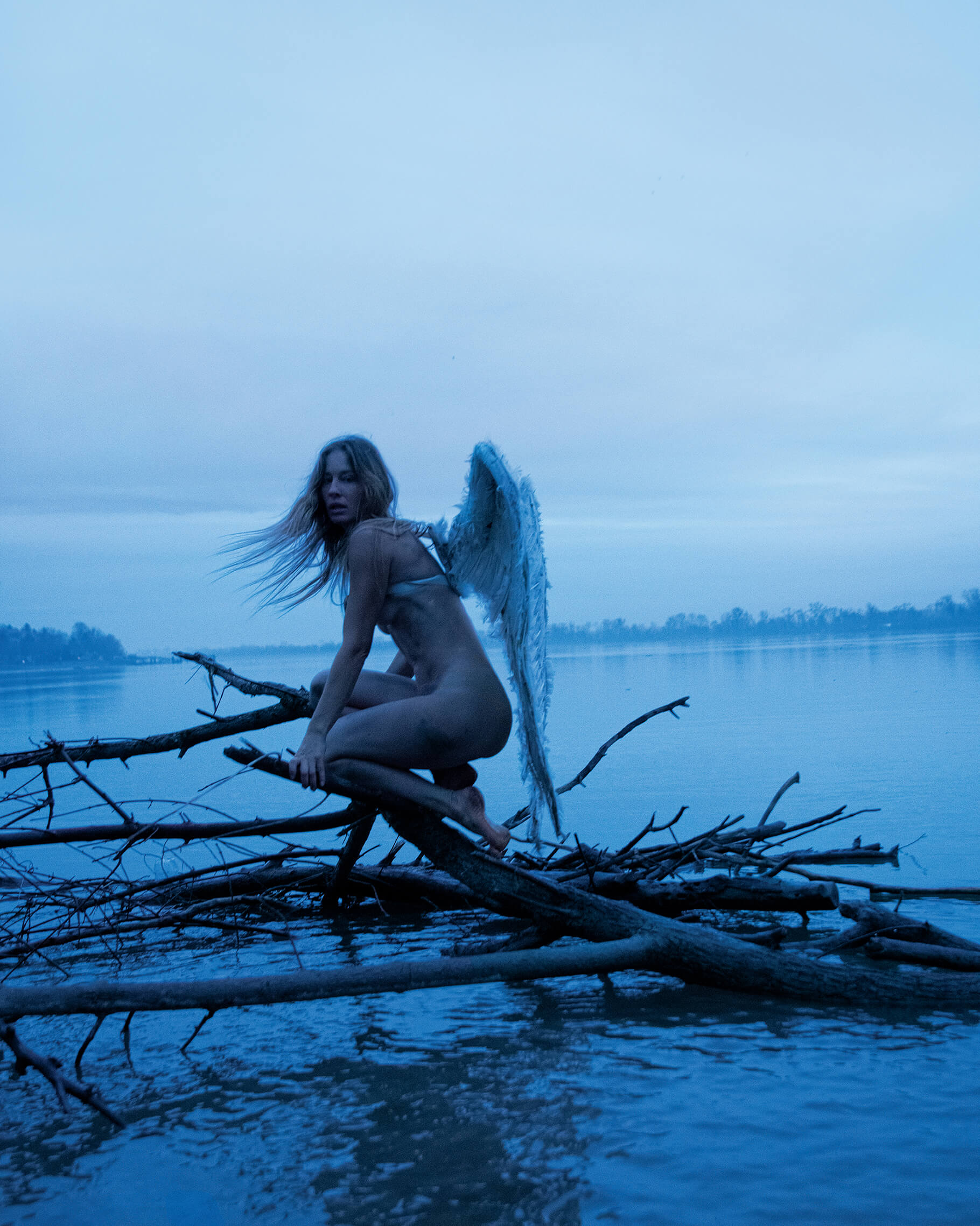
Agents and clients were giving her a hard time for the circles under her eyes and her messy hair. Who cares ? I was seeing a character actress. People like that, you don’t handle, you can’t just give them a list of appointments and a city map. You have to work with them, explain what you’re doing, respect who they are. When I left for Next Model Management, she was still going back and forth between Serbia and the rest of Europe, and I asked her to join me and really spend some time in Paris. She finally did, about the time she turned 20, her former agency telling her There’s no way you’ll ever work with major clients, she recalls. She had been shooting some honorable editorials in Italy, but they only told one small part of the story. Her combination of patrician looks and punkish confidence needed to be seen, in person, by people who would not feel overpowered, but instead would harness and feed on the energy she gave off. She also had a hell of a sense of humor, which helps in any walk of life.
I found out quickly that whenever Nataša was resisting change, like suggestions on what she should look like or wear for a particular appointment, it was because she was too proud to ask : she grew up in a war-torn country, no one had taught her much in those first years of modeling, and there was no Internet and social media to turn to. So she would stay with me in Paris, I’d stick her in the bathroom with bags of beauty products and instructions to try everything. Then I’d have her look at photography books, going all the way back to the 1930s. She was a quick study, identifying where photographers drew their inspiration, seeing through the hype. When I saw how interested she was, how analytical and pertinent for such a young woman, it confirmed what I thought : she gets it. And she wants it.
It would be so fascinating for me that in a way, you see me better than I see myself. So I was like, maybe this is where I have to surrender, she says now. I remember you took me shopping, you were like, come on, you have good style but let’s just give it a hand. And we bought Martine Sitbon shoes, and a Burberry coat that I still have. I think that you believing in me gave me balls.
She didn’t care much about beauty or clothes for herself, but she turned into one of the most professional models I ever represented. And my job was to make everybody see that, including the ones who said they’d throw some change at her if they saw her on the street. I would call up photographers, designers, casting directors, pulling all the cinematic references I could think of, trying to weave a story they could relate to, telling them they had to see Nataša again. Once she was in the door, it was up to her. And she pulled it off.

I remember, you sent me to Karl Lagerfeld like 50,000 times. I kept on saying, why am I going so many times, and you’d be like, just go. She booked the Chanel show, and the day before, she got called in at midnight to shoot the look book, replacing a girl who was too tired. Great choice, because there never was such a thing as too tired for Nataša, and the energy she brings is contagious. I feel like the moment I walked into that studio with Karl, I knew that this would last a very long time and that person would look at me as a great model, and maybe as a friend. The Chanel accessories campaign ensued, a countless amount of shows, and no less than 7 years of headlining the Lagerfeld Gallery campaigns.
Creating something unbelievable
The work started pouring in. Nataša is a photographers’ model, a designers’ model, not so much a clients’ model. And they in turn became her best agents, convincing clients to book her for shows and campaigns. Mario Testino and über-editor Carine Roitfeld were the first to catch on, confirming her for the Sonia Rykiel campaign. I would go on her shootings and witness the crew’s delight at working with this newcomer who instinctively knew how to move, how to work the clothes, how to catch the light, who was willing to keep working for as long as it took, and who was a good sport with everyone. They had to have more, which led to more bookings.
When you ask Nataša who were the important people in her career, Nick Knight is the first name that pops up : This was one photographer who really was not afraid of me going wild. David Sims, too, who knew how to freeze the moment of wildness. She also mentions Steven Meisel who shot her for the Valentino campaign in 2003, Stéphane Sednaoui and their work for Italian Vogue, the Steven Klein story she shot for L’Uomo Vogue with David Bowie – it’s now visible in London’s National Portrait Gallery. Her biggest regret ? Not having worked with Richard Avedon or Helmut Newton. I went to see Newton for a Louis Vuitton campaign, and I dressed up like I came out of one of his pictures. It was down to a big girl with braids and me, and then he said I was so skinny and I could leave. I said, the camera gives me eight kilos, and he freaked out, he goes, but you talk ! I said, yeah of course I can talk. And that was it. He never shot the campaign, and neither did I.
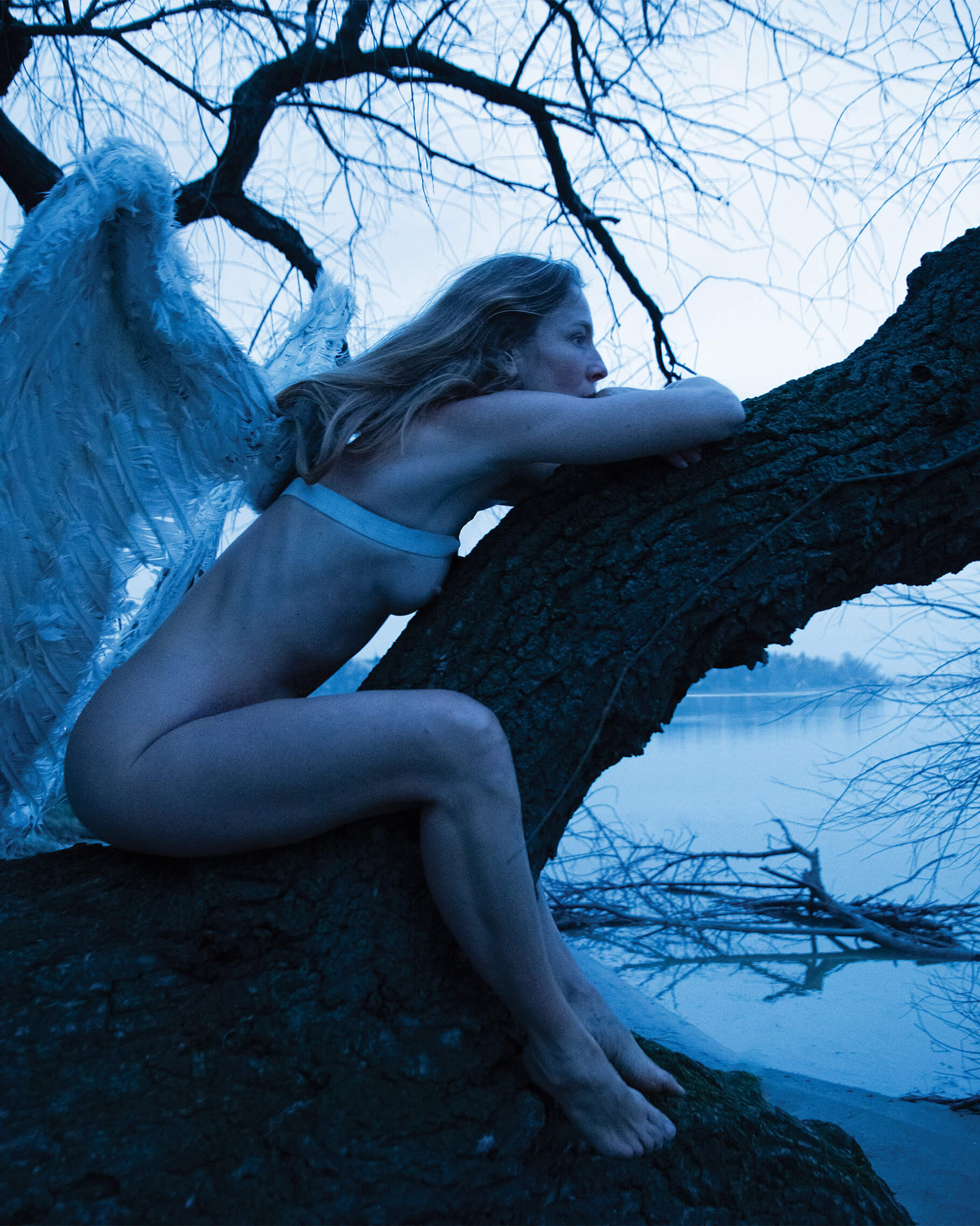
In the designer category, she names Karl Lagerfeld of course, and Nicolas Ghesquière at Balenciaga. He was so normal and down to earth. Every piece was like a piece of art, and I understood, because we worked so much in the studio together. Tom Ford also has a special place in her fashion pantheon, for being a visionary when he brought back sexy in the early 2000s, as well as having become a recognized film director. Today, some of the houses she walks for are headed by people she met years ago, like Casey Cadwallader at Thierry Mugler: He used to be Narcisso Rodriguez’s assistant, one of her most faithful New York clients, she remembers.
I’m interested in what goes on in the kitchen, not just at the dinner table. And I love performing, that’s why I could do so many shows. All these girls, they come in and they’re tired. But why are you tired? You didn’t cut those clothes, and you didn’t do all these things. You just go from one place to the other with a driver, those people actually work. I didn’t like going parties, being friends with famous people that I was not interested in. I was interested in creating something unbelievable.
I would do shoots as if they were a movie. I would get into those characters and I would play them from the beginning till the end. And I think a lot of them are based on Blade Runner, on Monica Vitti in Antonioni’s movies, on Gena Rowlands. I think it’s so important to watch a lot of movies, to read a lot of magazines, to read a lot of books.
And she worked hard. I don’t remember Nataša ever missing a flight, which is enough to earn her a medal in this industry. Her battery was constantly operating at full power, but when it discharged, the Virgo in her needed a base, somewhere she could chill out, and some simple answers. I’m happy I was able to provide both. Any doubts or any questions I had, she says, you didn’t turn it into a philosophy class. I went for shoots, and you gave me one or two words, and I was like, perfect, I get it.
Moving to New York
In 2002, after being confirmed as fashion royalty by the Calvin Klein and Gucci campaigns, and finally getting her visa, it was time for Nataša to move to New York, which had become the epicenter of the industry. A difficult transplantation for her : I get there and I see everything is turning around money, and everybody’s being so competitive. And it’s about the agencies, not so much about the models. She was camping out in an empty apartment and feeling vulnerable again. I flew out to boost her spirits and help her furnish her place. Never a big spender, always feeling a little guilty about her hard-earned money : Nataša never took a vacation to just rest, before her mother passed away, and not many after that. I’m still waiting for her to show up in Tahiti, where I moved years ago. But she meets me in Paris or I go to Belgrade when I travel back to Europe, and our bond revives instantly.
In New York she took acting classes. Abel Ferrara wanted her for a film project that never got done, but they hung out, and she counts this as one of her most interesting moments in the Big Apple. But she realized that actresses are not treated much better than models, and she never got rid of her accent. After a couple of years in New York she had to get away, and I thought it was a great idea. She took off to explore East Africa, missing four seasons. I think she also wanted to find out how much the industry loved her. Fashion welcomed her back. As lonely or out-of-place as she sometimes felt in New York, America and its more “commercial” jobs revealed another facet of her beauty and talent. A more sophisticated, womanly Nataša Vojnović emerged, as if saying “I can so that too” to those who thought she was too wild, too loud, or looked like a drug addict.
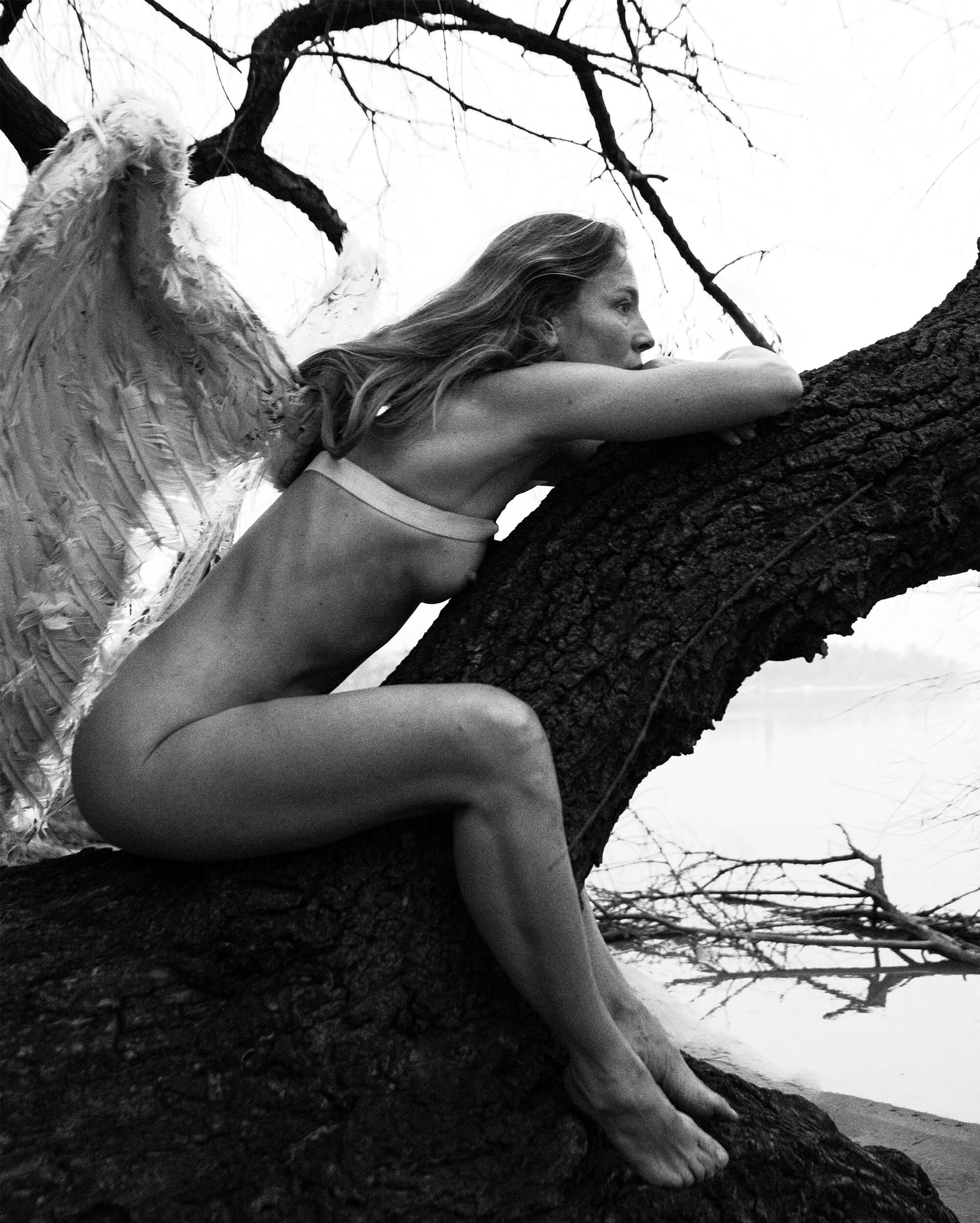
I was giving so much to my job, that I didn’t have time to breathe. I needed to slow down
Thirteen years ago she met Miljan Boskovic, and they welcomed Gora in 2018, years after she had given up on becoming a mother. The family divides its time between Belgrade, Kopaonik and Ada Bojana where Miljan runs his snowboarding and kitesurfing companies. After my mom passed away I really wanted to become a mother. Miljan too wanted a little girl. The doctor said that even with IVF it would be impossible. I’d be working so much, and giving so much to my job, I didn’t breathe. I needed to slow down.” She gave up coffee and cigarettes, took up kitesurfing, went to Hawaii, completed yoga teacher’s training. “That’s why I started doing yoga and meditation, just to get that breath back into my body. I just said to my partner, I totally understand if you want to find someone younger. He said no, we can always adopt later. And that’s when she came.
And like any parent, Nataša has a million stories about her daughter. I look at her and she’s so grown up now, it’s unbelievable. The other day she stopped a conversation I was having with a friend. She said, Mom don’t you worry, you have Dad and you have me, and the most important thing, you have yourself. She’s five years old.
Today Nataša Vojnović still has what she had when I met her : an old, wise soul in a teenage body, and a no-bullshit approach to life and work. She pops up regularly on prestigious runways and editorials, her reappearance always happily greeted by fashion experts, and she’s enjoying those breaks from being a stay-at-home mother. She’s glad the industry is circling back to older models, particularly those who haven’t done anything to their faces: If I’m backstage and I don’t have people like Anne-Catherine, Delphine, Elise or someone from back in the day, what do I do ? I’m just standing in line with a bunch of kids. Nataša moved back to Belgrade for good after being stuck in New York during Covid, and having invested her earnings wisely, she gets to pick what she wants to do. For shooting the cover of Vogue Adria, she is wearing a dress created by Alber Elbaz for Lanvin in 2007, which features a print of Natasha’s likeness. This dress is a symbol that speaks to Natasha’s significance in the fashion world, as well as the idea of sustainability, which is one of Vogue’s principles. I love that I can keep it exclusive, I’m not going to do a lot, but I’m going to do a little, before catching herself. Maybe this is my last cover, but it’s a nice way to close this chapter of my life. Somehow I don’t really believe this. I’m happy now, I’ve never been so happy, she says. And this, I believe.
Make-up: Saša Joković
First edition is available online. On the newsstands from March 12th.